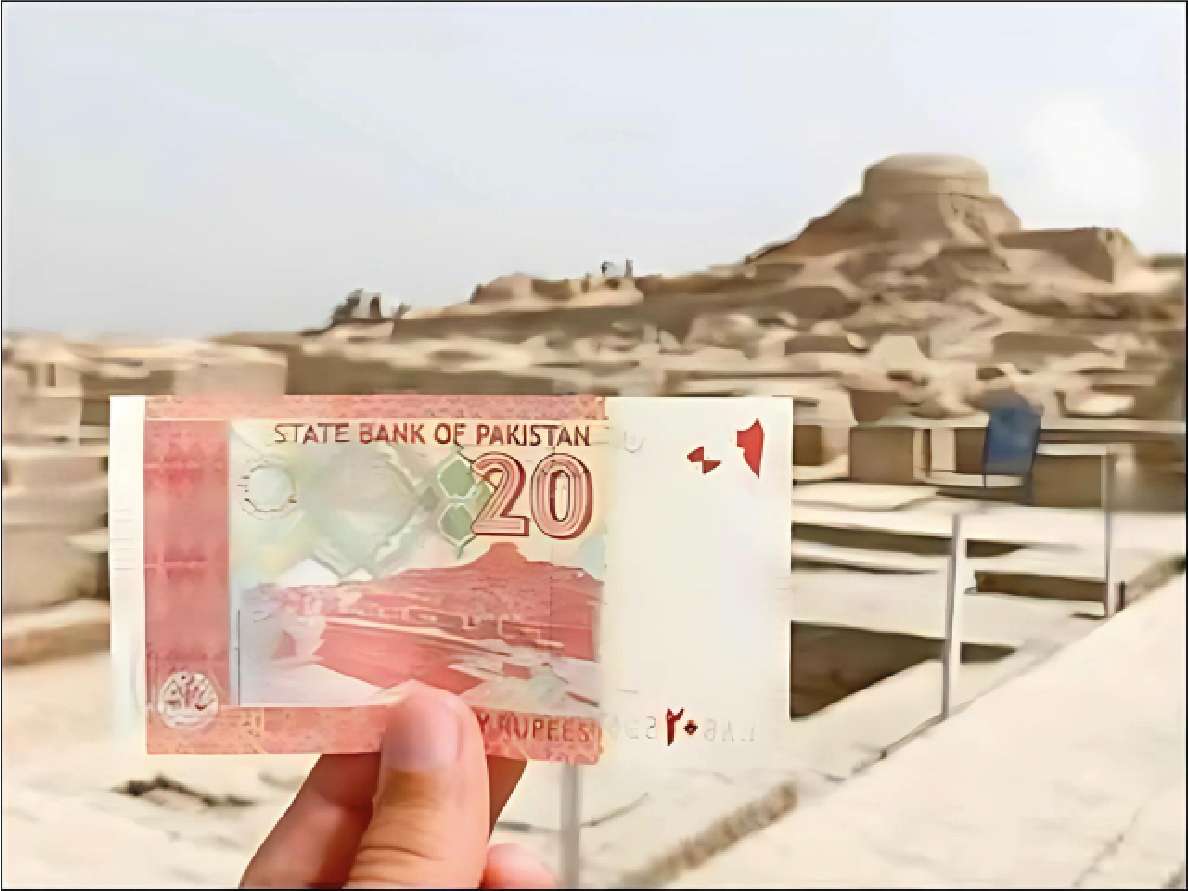PTBP Web Desk
The Sindh government has expressed strong concerns over the removal of the Mohenjo-Daro image from Pakistani currency notes, specifically the 20-rupee note. In response to this decision, Sindh’s Minister for Culture and Tourism, Syed Zulfiqar Ali Shah, has sent an official letter to the Governor of the State Bank of Pakistan (SBP).
The letter highlights the importance of Mohenjo-Daro as a historic and cultural symbol and urges the central bank to reconsider its decision. In the letter addressed to the Governor of the SBP, Syed Zulfiqar Ali Shah expressed deep reservations about the decision to replace the image of Mohenjo-Daro with that of the Khyber Pass on the 20-rupee note. Shah emphasized that Mohenjo-Daro is not just a significant archaeological site but also a UNESCO World Heritage Site that represents a 5,000-year-old civilization. He pointed out that the decision to remove this symbol was made without any consultation with relevant stakeholders, including the Sindh government.
Mohenjo-Daro is one of the world’s earliest urban settlements, dating back to around 2500 BCE. It is a symbol of the ancient Indus Valley Civilization, which was one of the most advanced civilizations of its time. The site has been a source of pride not just for Sindh but for Pakistan as a whole. It first appeared on the 10-rupee note in the 1970s and was later featured on the 20-rupee note, serving as a reminder of the country’s rich historical legacy. Its inclusion on the currency was a way to celebrate and acknowledge the historical and cultural heritage of the region.
The decision to replace Mohenjo-Daro’s image with that of the Khyber Pass has raised concerns among historians, cultural experts, and the general public. The Khyber Pass is indeed an important geographical and historical landmark, but many argue that the significance of Mohenjo-Daro as a symbol of ancient civilization and cultural identity should not be overlooked. The Sindh government’s letter underscores the importance of preserving national heritage symbols and giving them the recognition they deserve.
The Sindh Department of Culture has urged the State Bank of Pakistan to reconsider its decision. The letter warned that ignoring such a vital part of the country’s heritage would be a mistake. It called for proper recognition of Mohenjo-Daro’s global importance and historical legacy. By removing its image from the currency, there is a risk of diminishing the public’s awareness and appreciation of this ancient site. The letter stressed that Mohenjo-Daro is not just a symbol of Sindh’s pride but a representation of Pakistan’s rich historical and cultural identity.
Currency notes often serve as a medium to represent and promote a nation’s cultural and historical identity. The imagery on currency can reflect a country’s values, history, and achievements. By featuring Mohenjo-Daro on the 20-rupee note, Pakistan was paying homage to one of the earliest and most significant civilizations in human history. The Sindh government believes that this change in imagery could lead to a loss of cultural significance and awareness among the public. The removal of such a symbolic image is seen as a step back in promoting the country’s heritage.
The removal of Mohenjo-Daro’s image has sparked a public debate on the importance of preserving and promoting historical and cultural heritage. Many citizens and cultural organizations have voiced their support for the Sindh government’s stance. They argue that currency notes are a way to educate and remind the public about the nation’s historical achievements and cultural heritage. By featuring Mohenjo-Daro, the country acknowledges and celebrates its ancient roots, and removing it may send the wrong message about the value placed on historical preservation.
It remains to be seen how the State Bank of Pakistan will respond to the concerns raised by the Sindh government. The central bank’s decision on whether to reinstate the Mohenjo-Daro image or maintain the current design featuring the Khyber Pass will have implications for cultural representation on Pakistani currency. This debate has brought to light the broader issue of how national symbols are chosen and represented in public domains, and it emphasizes the need for inclusive consultation and consideration of all stakeholders in such decisions.




